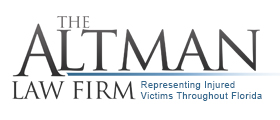Car Accidents can cause injuries ranging from soft tissue injuries to death with one common type of injury being a fractured bone. A study published in the US National Library of Medicine has shown that the most common bone fracture caused by an automobile involved collision is that of the lower extremities. More than half of the patients in the study involving automobile accidents suffered multiple fractures. In serious collisions, the victim quite often fractures a series of bones that make up a portion of the body. For example, if a victim injures his lower extremity because of vehicle crush, he/she often suffers fractures of the patella, femur and pelvis. If a victim suffers upper extremity injuries because of vehicle intrusion, he/she often suffers a fractured humerus (upper arm bone), elbow and shoulder. These injuries are often life changing and often the victim never regains his/her pre-accident physical condition. Vehicles are designed to crush in strategic places to save lives. However, no matter how much safety design goes into how a vehicle will withstand an impact, a serious collision will likely cause serious injuries. Below is a brief description in lay terms of several different types of bone fractures.
One of the main distinctions between bone fractures are Non-Displaced Fractures and Displaced Fractures. In a Non-Displaced Fracture, the bone may be broken all or part of the way through with the bone maintaining proper alignment. In a Displaced Fracture, the bone will likely have been broken in at least one location and have become improperly aligned. There are many different types of Displaced Fractures describing the type and severity of the fracture. A few of the types are a Comminuted Fracture where the bone is broken into several pieces (including Spiral Wedge Fractures, Bending Wedge Fractures, and Complex Fractures), a Compound Fracture where the broken bone punctures through the skin, an Impacted Fracture where the bones are driven into one another.
Treatment of Fractures and the long term effect of Fractures varies depending on the patient and the area of the fractures. Elderly victims and very young victims heal very differently. Elderly people may require more invasive surgical procedures because of osteoarthritis – this often includes Intramedullary Rodding (a surgical procedure where a drill bores out a hole in the middle of a bone and has a rod placed inside for support). Younger victims are still growing and have areas known as growth plates that are essentially cartilage at the end of the long growing bones that allow for the bone to grow as the personal ages. A fracture to a child’s growth plate can cause that bone to grow crooked or not to the proper length. The American Academy of Orthopedic Surgeons has published that 15-30% of fractures in children are, in fact, growth plate fractures. The statistics also reveal that 1-10% of growth plate fractures results in deformity of the bone. Growth plate fractures are usually defined by the Salter-Harris Classification Scale (Type I – V). It is important to have any child that suffers a growth plate fracture to see a qualified orthopedic surgeon as soon as possible after the break to help minimize and long term effect of deformity.
Most people who suffer bone fractures as a result of an automobile accident seek immediate medical care at the Emergency Room. However, sometimes the follow-up care with an orthopedic surgeon or pediatric orthopedic surgeon can be just as important. Jeffrey S. Altman of The Altman Law Firm is a Miami Personal Injury Lawyer that represents victims of Car Accidents throughout the State of Florida. Our office is located in Miami with quick and convenient access from North Miami, Miami Shores, North Miami Beach, Aventura and South Beach. For a Free Consultation Call 305.373.3730 or Email Jeffrey S. Altman at [email protected].
Google+Areas of Practice
- 18 Wheeler and Other Commerical Truck Accidents
- Alcohol Related Accidents
- Bicycle Accidents
- Boat Accidents
- Car Accidents
- Catastrophic Personal Injury
- Medical Malpractice
- Motorcycle Accidents
- Negligent Security
- Nursing Home Neglect and Abuse
- Pedestrian and Tourist Accidents
- Public Bus Accidents
- Fall Down | Premises Liability Accidents
- Taxi Cabs and Limousine Accidents
- Traumatic Brain Injury
- Work Related Injury
- Wrongful Death
The Altman Law Firm
- 10800 Biscayne Boulevard Suite 700 Miami, FL 33161
- (305) 373-3730
- (305) 373-3734
- [email protected]
- [email protected]
- Find us on map
Recent Posts
- 02 Sep 2020Representing Miami Personal Injury Clients During a Pandemic – The Altman Law Firm
- 10 Jan 2018The Altman Law Firm focuses on Catastrophic Injury Cases
- 02 May 2016Miami-Dade Emergency Vehicles Driving Through Intersections
- 26 Apr 2016Successfully Handling Miami Injury Cases
- 10 Sep 2015The Altman Law Firm obtained a $5,000,000.00 Settlement that was Featured in The Daily Business Review
